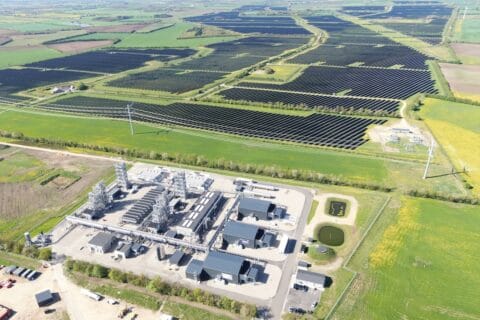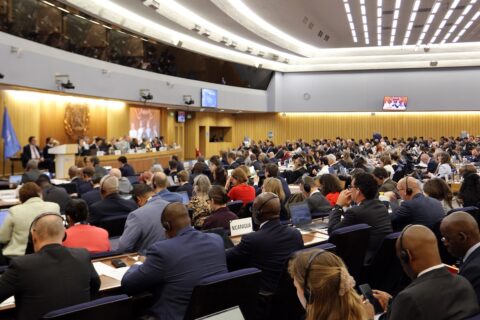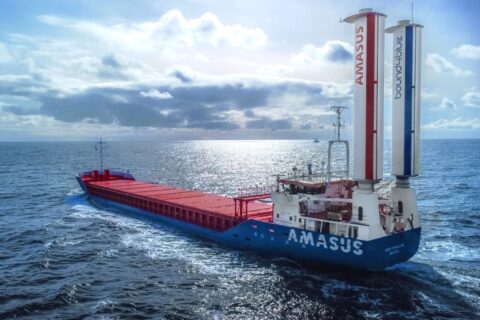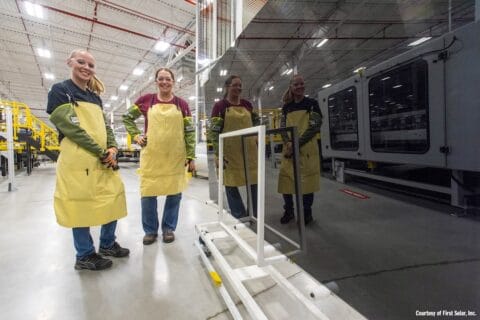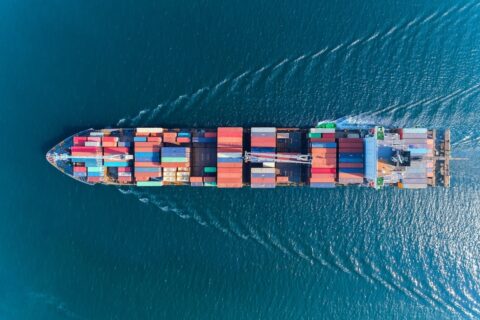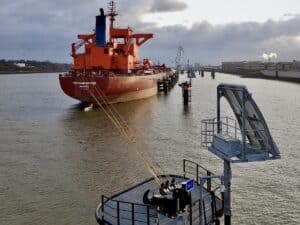
Many environmental impacts associated with international shipping actually occur when vessels are moored up, rather than out at sea. Helping shrink the associated carbon footprint by cutting energy use and emissions at the Port of Hamburg is a newly-built green berthing area in the Elbe River, powered by 19 solar panels. The panels provide power to quick-release mooring hook units with integrated capstans, so supporting more sustainable shipping.
Following the Port of Rotterdam, the Port of Hamburg is the second major shipping hub to opt for this sustainable solution. Hamburg is Germany’s biggest seaport and the numbers are huge: it features around 8,000 ship calls per year, almost 300 berths and a total of 43km of quay for seagoing vessels.
With 136.6 million tons of cargo crossing the quay walls, the trade and transport footprint at the Port of Hamburg involves managing around 9.3 million standard containers (twenty-foot equivalent units, or TEU). Taken together, the potential environmental impacts of all this shipping, berthing and logistics are also a big issue.
Solar systems to help cut berthing impacts represent one part of the plan for greening the port and boosting sustainable shipping. In fact, though, whilst the solar panels might be the first thing to catch the eye, the real innovation with these mooring systems, built by Dutch maritime innovator Straatman BV, is actually to be found beneath the surface of the water.
Traditional solutions depend on underwater power cables and the associated challenges are well-known. The installation of cables is a time-consuming, costly and a high-risk operation. Moreover, it is not uncommon for the power lines to be damaged by anchors, or during dredging activities.
As a result, equipment that is (unexpectedly) out of order can compromise the safety of mooring operations. To make matters worse, repairing the damaged lines involves the same costs and risks of cable installation.
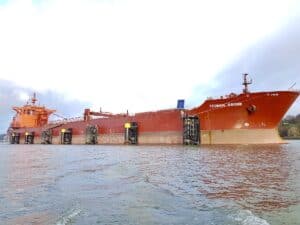
By contrast, solar-powered solutions seek to avoid these issues by removing the need for underwater cables altogether. By doing so, the lead time for the construction of dolphins and berths is reduced. Maintenance costs are low, as has been proven in the Port of Rotterdam.
In addition, of course, using solar energy reduces power costs and aligns with a vision of sustainability. Hamburg’s port authority also cited reliability as an important factor in their choice.
The multipe benefits that these solar systems can offer the construction and operation of mooring dolphins have not gone unrecognised — the solar-powered mooring systems have won the IHS Port Innovation award and have been listed #1 in the ‘Sexy top 5’ of Maritiem Nederland.
Technical details and project development
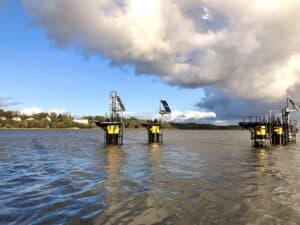
The ‘solar systems’ provide power to capstans as well as working lights in order to guarantee safe berthing. The dolphins are equipped with triple and quadruple 125 and 150 ton quick-release hooks, also supplied by Straatman.
Using LoRa technology, essential system details are shared, including available power, energy consumption, battery quality and a log of the capstan use. This allows the Port of Hamburg to monitor the status of the mooring systems in a web app and plan just-in-time preventative maintenance.
The idea for sustainable, solar-powered mooring dolphins was first conceived in 2013. Straatman received an informal request from a main port authority to investigate the possibility of powering capstans without power cables, in particular for dolphins located in open water. Though wind was also considered as a possible energy source, Straatman concluded the sun to be more reliable and stable.
In close cooperation with the port authority and strategic partners, the Dutch company developed a design based on solar panels and battery packs. After a pilot project in 2014, the design was further optimised for installation and its size was reduced. Working lights and navigations lights were also integrated. This second generation of the design was then ordered by the Port of Rotterdam.
Hamburg’s new berthing area was completed in the last quarter of 2019. It serves as a waiting area for vessels with a deep draft that depend on the tide to enter the Port of Hamburg. The berthing area was realised by the Arbeitsgemeinschaft GSWP Finkenwerder joint venture, which consists of the companies F+Z Baugesellschaft (technical leader of the j-v), AUG PRIEN Bauunternehmung and Taucher Knoth from Hamburg, in Germany.
Further Reading:
- More about Straatman Solar Systems.
- More about Port of Hamburg.
>>> Do you have sustainability news to broadcast and share? If you would like to see it featured here on SustMeme, please use these Contact details to get in touch and send us your Press Release for editorial consideration. Thanks.

